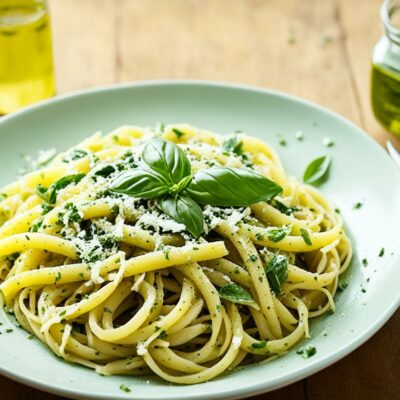Key Takeaways
- A low histamine breakfast can help alleviate allergy symptoms and support overall health.
- Avoiding histamine-rich foods and focusing on fresh ingredients is key.
Understanding Histamine Intolerance and its Impact on Breakfast Choices
Histamine intolerance is a condition that affects many individuals and can be triggered by certain foods. When histamine levels in the body exceed the body’s ability to break them down, symptoms such as headaches, itching, and gastrointestinal issues can occur. This condition can make meal planning for breakfast challenging. Following a low histamine diet is crucial for managing histamine intolerance, and it requires being mindful of the types of foods you eat. For breakfast, certain choices are better than others, and it’s important to understand how different foods can impact histamine levels in the body. To enjoy a healthy and symptom-free breakfast, it’s important to focus on fresh and minimally processed ingredients. Foods that are high in histamine, such as fermented foods, aged cheeses, and processed meats, should be avoided. Additionally, cross-reactivities with other foods can also trigger symptoms, so it’s essential to consider potential food allergies or sensitivities when planning breakfast choices.Understanding Histamine Intolerance and its Impact on Breakfast Choices
It’s important to understand how histamine intolerance can impact breakfast choices. High histamine foods and cross-reactivities should be avoided, while fresh and minimally processed ingredients should be prioritized.Key Principles of a Low Histamine Breakfast
A low histamine breakfast is key for individuals with histamine intolerance or allergies. The following principles can help guide food choices for a breakfast that is low in histamine:| Principle | Description |
|---|---|
| Avoid High Histamine Foods | Foods that are high in histamine, such as aged cheeses, cured meats, and fermented foods, should be avoided. Fresh, low histamine ingredients should be the focus. |
| Focus on Fresh Ingredients | Choose fresh fruits and vegetables, lean proteins, and unprocessed grains when possible. Freshly cooked meals are also recommended over pre-packaged or pre-made options. |
| Consider Potential Cross-Reactivities | Some individuals with histamine intolerance may also have allergies or sensitivities to certain foods. It’s important to be aware of potential cross-reactivities and choose ingredients accordingly. |
- Low histamine fruits like apples, bananas, and blueberries
- Fresh vegetables like kale, spinach, and bell peppers
- Lean proteins such as turkey, chicken, and fish
- Unprocessed grains such as quinoa or rice
Discover Delicious Nachos Recipes
Delicious and Nutritious Low Histamine Breakfast Recipes
Starting the day with a low histamine breakfast doesn’t have to be boring or bland. Here are some delicious and nutritious options that are easy to prepare and won’t trigger histamine release.| Recipe | Ingredients | Instructions |
|---|---|---|
| Blueberry Smoothie Bowl | Frozen blueberries, banana, coconut milk, chia seeds, vanilla extract | Blend all ingredients in a food processor until smooth. Pour into a bowl and top with granola, sliced banana, and more blueberries. |
| Avocado Toast | Gluten-free bread, avocado, lemon juice, salt, red pepper flakes | Toast the bread. Mash the avocado with lemon juice, salt, and red pepper flakes. Spread the avocado mixture onto the toast and serve. |
| Hash Brown and Veggie Skillet | Shredded potatoes, bell peppers, onion, spinach, olive oil, garlic powder, salt | Heat olive oil in a skillet over medium-high heat. Add the shredded potatoes and cook until browned and crispy. Add the bell peppers, onion, and spinach and cook until tender. Season with garlic powder and salt. |
| Quinoa Breakfast Bowl | Quinoa, almond milk, cinnamon, maple syrup, banana, walnuts | Cook quinoa according to package instructions, using almond milk instead of water. Stir in cinnamon and maple syrup. Serve in a bowl topped with sliced banana and walnuts. |
Planning a Balanced Low Histamine Diet for Breakfast
Incorporating a variety of nutrients into a low histamine breakfast is essential for maintaining a balanced diet. Here are some tips for planning a satisfying and nutritious meal:- Include a source of protein: Opt for fresh meats, poultry, or fish that are low in histamine or plant-based options like tofu or quinoa.
- Add healthy fats: Avocado, nuts, and seeds are great options that can also provide a satisfying crunch to your morning meal.
- Choose low histamine fruits and vegetables: Fresh produce like berries, leafy greens, and cruciferous vegetables are excellent choices for a low histamine breakfast.
- Consider adding gluten-free grains: If tolerated, gluten-free options like rice, oats, and corn can provide additional fiber and nutrients to your meal.
Tips for Incorporating Low Histamine Breakfast Ideas into Your Daily Routine
Switching to a low histamine breakfast can bring relief to individuals with histamine intolerance or allergies. Here are some tips for making low histamine breakfast ideas a part of your daily routine:- Plan ahead: To save time and ensure you have the necessary ingredients on hand, plan your low histamine breakfasts in advance. Consider preparing breakfast staples, like hard-boiled eggs or gluten-free muffins, on the weekends for the week ahead.
- Focus on fresh ingredients: Fresh fruits, vegetables, and proteins are staples of a low histamine breakfast. Incorporate them into your meal plan for a nutrient-rich and satisfying breakfast. Avoid processed and packaged foods, which can contain high levels of histamine.
- Be mindful of cross-reactivities: Certain foods may cross-react with histamine and exacerbate symptoms. Be aware of potential cross-reactivities, such as citrus fruits, and limit or avoid them as needed.
- Experiment with substitutes: If you have dietary restrictions or preferences, experiment with substitutes for high histamine foods. For example, try using coconut milk instead of dairy milk or gluten-free oats instead of wheat-based cereal.
- Involve your healthcare professional: Work with your healthcare professional or registered dietitian to develop a personalized low histamine diet plan. They can provide guidance on incorporating low histamine breakfast ideas into your daily routine and ensure your nutrient needs are being met.
Quick and Easy Recipes: Delight in Every Bite
Conclusion
Starting the day with a nutritious breakfast is important for overall well-being, but it can be especially crucial for individuals with histamine intolerance or allergies. A low histamine breakfast can help reduce symptoms and support a healthier lifestyle. Throughout this article, we’ve explored the concept of a low histamine breakfast, the impact of histamine intolerance on breakfast choices, the key principles of a low histamine breakfast, and delicious and nutritious low histamine breakfast recipes. We’ve also provided guidance on planning a balanced low histamine diet for breakfast and offered practical tips for incorporating low histamine breakfast ideas into your daily routine.Experiment with Low Histamine Breakfast Ideas
By experimenting with the recipes and tips provided, you can discover new and delicious breakfast options that fit into a low histamine diet. Remember to consult with a healthcare professional or registered dietitian for personalized dietary advice. With these low histamine breakfast ideas, you can start your day off right and enjoy allergy relief throughout the day.Can the Oatmeal Cookie Delight Recipe be Modified for a Low Histamine Breakfast?
Can the oatmeal cookie recipe be modified for a low histamine breakfast? With a few adjustments, it is possible. Swap honey or maple syrup for sugar, and omit ingredients like raisins, almond extract, or cinnamon that may trigger histamine release. Experiment with gluten-free oats and alternative flours for a histamine-friendly version of this delightful breakfast treat.











